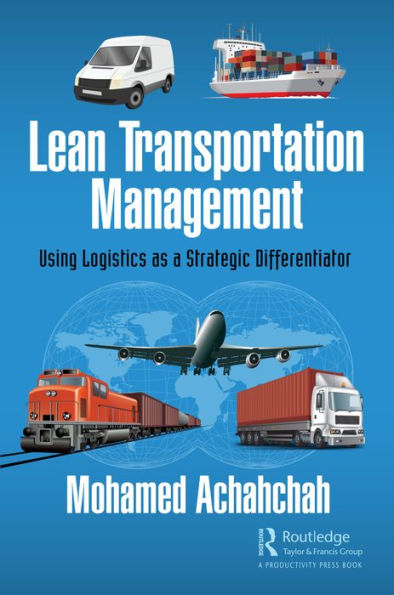This book provides an overview of the key transportation management processes from a shipper’s perspective. It enables managers to gain quick insight in the added value of transportation as a strategic differentiator, its key drivers, and guidelines on how to use them in an effective and efficient decision-making process. It explains how to identify and eliminate waste using basic Lean tools and proven concepts. The reader is guided on how to start implementing the Lean methodology and best practices in the industry to realize significant savings.
Companies such as Adidas and Amazon are using transportation to increase sales by delivering purchased products faster than the competition. These companies do not treat transportation as a cost center. They are not focusing on reducing transportation spending. They allow customers to buy any product that is available in any store or warehouse and have it delivered to their homes. By delivering faster than the competition, they increase sales. At the same time, they lower their total supply chain costs as faster deliveries lead to fewer returns. Reduction of returns means higher sales and lower transportation costs for returns. The result is higher profits while creating more value for the customer.
Transportation is moving from a cost center towards a profit center. The traditional logistics service providers are perceived to not innovate fast enough. Top management must understand the transportation management basics and use it in their strategic decision-making. They should be involved in discussions on how to organize the transport management function in the best way and how to use it as a service differentiator. Transportation is more than the efficient movement of supplies, sub-assemblies and final products. In addition, it is more than the key performance indicators on the business-balanced scorecard. Transportation management professionals fail to catch top management’s attention due to the use of technical language. It is more difficult to understand transportation key performance indicators such as loading degree, net and gross pick-up and delivery reliability. It is easier to get top management attention when talking about lost sales due to stock-outs, lost tenders due to long delivery times, high inventory holding and scrap costs.
This book provides an overview of the key transportation management processes from a shipper’s perspective. It enables managers to gain quick insight in the added value of transportation as a strategic differentiator, its key drivers, and guidelines on how to use them in an effective and efficient decision-making process. It explains how to identify and eliminate waste using basic Lean tools and proven concepts. The reader is guided on how to start implementing the Lean methodology and best practices in the industry to realize significant savings.
Companies such as Adidas and Amazon are using transportation to increase sales by delivering purchased products faster than the competition. These companies do not treat transportation as a cost center. They are not focusing on reducing transportation spending. They allow customers to buy any product that is available in any store or warehouse and have it delivered to their homes. By delivering faster than the competition, they increase sales. At the same time, they lower their total supply chain costs as faster deliveries lead to fewer returns. Reduction of returns means higher sales and lower transportation costs for returns. The result is higher profits while creating more value for the customer.
Transportation is moving from a cost center towards a profit center. The traditional logistics service providers are perceived to not innovate fast enough. Top management must understand the transportation management basics and use it in their strategic decision-making. They should be involved in discussions on how to organize the transport management function in the best way and how to use it as a service differentiator. Transportation is more than the efficient movement of supplies, sub-assemblies and final products. In addition, it is more than the key performance indicators on the business-balanced scorecard. Transportation management professionals fail to catch top management’s attention due to the use of technical language. It is more difficult to understand transportation key performance indicators such as loading degree, net and gross pick-up and delivery reliability. It is easier to get top management attention when talking about lost sales due to stock-outs, lost tenders due to long delivery times, high inventory holding and scrap costs.

Lean Transportation Management: Using Logistics as a Strategic Differentiator
292
Lean Transportation Management: Using Logistics as a Strategic Differentiator
292
Product Details
| ISBN-13: | 9780429953897 |
|---|---|
| Publisher: | Taylor & Francis |
| Publication date: | 09/17/2018 |
| Sold by: | Barnes & Noble |
| Format: | eBook |
| Pages: | 292 |
| File size: | 7 MB |
